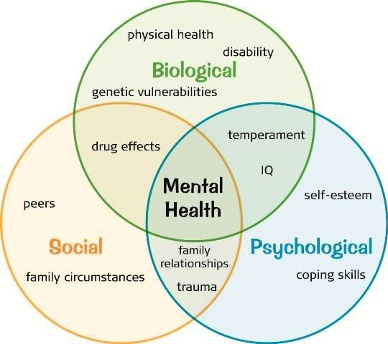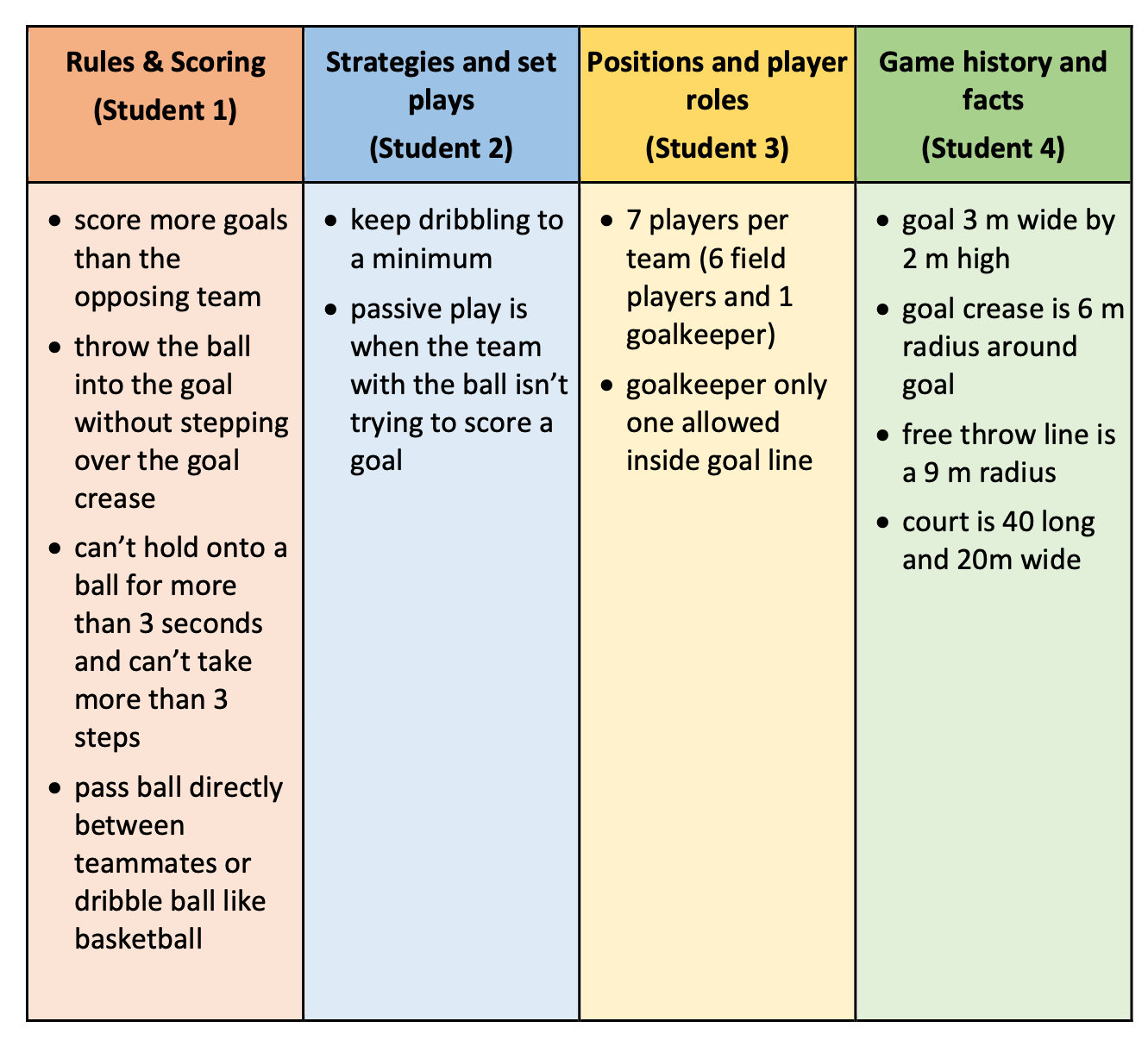Note-taking skills are a skill set that must be explicitly taught to students (HITS 3: Explicit Teaching) to
- capture key information from written, visual, or oral texts and
- record information in a way that makes meaning.
The notes then provide a basis for students to create their own sentences and pieces of writing.
Despite the increased use of electronic devices in secondary classrooms, writing notes by hand is linked powerfully to cognitive activity such as thinking and memory (Mueller & Oppenheimer, 2014).
Note-taking is about communicating to yourself, thus there are no fixed rules about how a student chooses to record and summarise information. Note-taking skills can include:
- using pictures and symbols
- recording keywords and main points
-
using a graphic organiser
- using colour to aid with memory retention
Using discussions to paraphrase text
Paraphrasing is asking students to restate ideas in their own words without losing the key message/s. A common issue with students being asked to paraphrase or answer questions is that they simply extract chunks from the text rather than writing the information in their own words.
Teachers can assist students to paraphrase text in their own words by having them engage in discussions about the text with their peers. To do this:
- Ask students to read a text for example the first two pages of
'Alcohol and young people', an informative text produced by the
Alcohol and Drug Foundation
- and write down 5 keywords to describe the main information from the text.
- Students 'rank' their keywords in order of the importance that they have in the text. This ensures students are thinking about the topic as well as having to review the original text to justify their position.
- In pairs, students compare their 5 words and justify the ranking order.
- After this discussion, students revise their 5 words and use their new list as a basis to paraphrase the text.
- Students
jointly construct definitions or explanations about the 5 keywords they have selected.
Below are the 5 key terms a pair of Year 9 and 10 students created after reading the first two pages of
'Alcohol and young people', an informative text produced by the
Alcohol and Drug Foundation (VCHPEP142,
VCHPEP148,
VCHPEP151). After writing down the key terms, the pair of students discussed why they chose them and wrote down their paraphrased text.
Students' keywords:
- adolescence,
- risk-taking behaviour,
- sensation-seeking behaviour,
- brain development,
- causes of death.
Students' paraphrase:
Adolescence is a time when teenagers' bodies and brains develop into their adult form.
During adolescence, teenagers engage in more risk-taking and sensation-seeking behaviour, including drinking alcohol.
Alcohol can negatively impact brain development during adolescence.
Alcohol has been associated with several causes of death of adolescents.
Using graphic organisers to summarise a text
Summarising is a succinct representation of ideas in a text. When summarising an article or information text, students may need a basic list of starters to ensure they have sufficient knowledge to discuss the text.
A basic information summary on 'Water Competency of Victorian Children' from the
Life Saving Victoria website could be scaffolded using '5W&1H' questions (VCHPEP129,
VCHPEP148).
| Who | Lifesaving Victoria conducting research
5 - 14-year old report of drownings
2 out of 5 Year 6 students in Victoria cannot swim 50 m |
|---|
| Where | In Victoria
In a 50m pool- lack of swimming competency |
|---|
| What | Child drownings
Inability among many pre-teens to swim 50m |
|---|
| When | from 2006 - 2011
research is ongoing |
|---|
| Why | No participation in water safety programs
No formal swimming lessons
To prevent future drownings |
|---|
| How | Research will identify a benchmark to develop future programs that will enable competent younger swimmers in Victoria |
|---|
Other graphic organisers can also support students to classify and organise the information they read and view. Students may be provided with a template such as a Venn Diagram or PMI chart to classify their thinking as they see and process the information. The jigsaw approach is effective when students must process large chunks of information (HITS 5: Collaborative Learning).
Venn Diagram
Students draw two or three circles that have an overlap. The circles include the information specific to the topic (e.g. Social). The overlap areas include information that is consistent across several topics.
Below is an example of a Venn diagram a student created to summarise the three contributing factors to mental health (VCHPEP142).

PMI chart
PMI (plus, minus, and interesting) charts provide students with a clear template to classify information. The PMI chart allows students to gather basic information while processing and analysing the positives, negatives, and other important points.
The PMI chart below was created by a Year 7 or 8 student analysing technology as a fitness tool (VCHPEM136).

Jigsaw activity
Providing a specific structure can alleviate the load of processing large chunks of information.
The Jigsaw Activity allows information to be recorded by classification and uses peer teaching (HITS 5: Collaborative Learning).
Step 1: Each student is responsible for recording information on
one area within the jigsaw. This can be recorded in a table or graphic organiser such as the 't-chart' below.
Step 2: One person at a time shares their findings with the group who fill in that part of the jigsaw. This is an important activity for the student speaking or 'teaching' and the students listening.
Step 3: As above, the next student teaches their topic area. Students continue teaching one another their topic area until all the 'pieces of the jigsaw' are complete.
PE Example: European Handball
- Watching a video on
European Handball, students work in groups of 4 and record the information for their column.
- As a group, students peer report back on their section for other group members to record.

Curriculum links for the above example:
VCHPEM136,
VCHPEM138,
VCHPEM141.
Health example: Investigating nutrition
- Students conduct research online or using print resources to research different initiatives relating to nutrition, such as:
- Students form groups of four, each taking responsibility for one of the areas to research.
- As a group, students peer-teach their section for other group members to record.

Curriculum links for the above activity: VCHPEP145